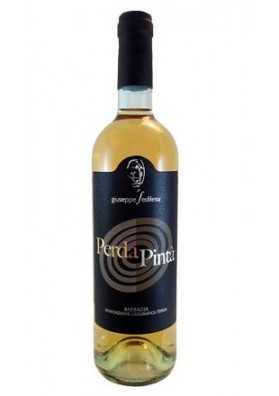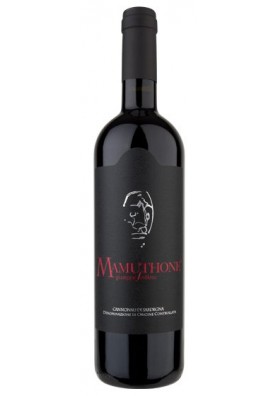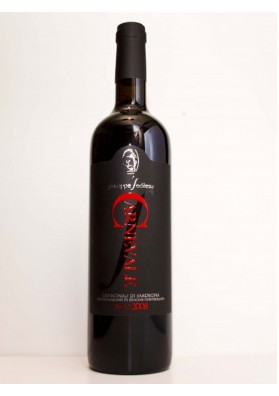The family-run winery has been founded by Giuseppe and Grazia and today it is managed by their three children and their families (daughter Antonietta with her husband Emilio, son Francesco with his wife Rosa, son Salvatore with his wife Mariella and a total number of 13 grandchildren). It came into being 35 years ago when the first hectare of vineyard was acquired.
For years we have produced only bulk wine, which we sold in the villages close to Mamoiada. Then in 2000, when we children took over the winery, we hit on the idea of bottling and labeling our Cannonau. With this step we wanted to find out if the same aromas and the same flavours with which we grew up and which have always been important elements of our lives would also be appreciated by a demanding wine market. It was worth the experiment. During the following 10 years we could double our wine production and build new cellars.
Today we are members of the administration council of the Consorzio di Tutela del DOC Cannonau di Sardegna (a Sardinian cooperative which has set as its goal the protection of the brand DOC Cannonau) and we are starting up several activities in the wine tourism sector. We also take part in the project La Strada del vino Cannonau (The Cannonau wine route) which is starting its activities right now.
The Cellars
According to our philosophy, producing good wine, or rather being good in making wine first of all is based on the awareness that wine quality is to be created through a respectful treatment of the grapes, the primary “raw material” of our work and the single most important component of a good wine. Many different kinds of good wines can be made from the same variety. But for us, the distinguishing factor is the tradition. That means the passion to make wines which express what is familiar to us from our childhood and which we may call “our wine”. Even when we are applying new methods in wine production, as for example the use of barriques for the wines Carnevale and Perda Pintà, we always try to preserve the typical characteristics, the “soul” of our Cannonau.
Our new built cellars are located in the centre of Mamoiada. We have chosen for a concept that reflects our way of winemaking. With respect to the environment we have used ecologically sustainable materials such as Ytong, granite and wood. A photo-voltaic system produces the energy we need for our work. Even the architecture of the building shows a close link to our land. A sail made of stone which dominates the façade facing the street for example reminds the ancient culture of the Nuraghi. Vinification takes place in two areas of the winery: fermentation and bottling on the ground floor, maturing and refinement in the underlying cellars.
The red grapes
The vinification starts with the arrival of the grapes in our cellars, where rotten or immature grapes are sorted out by hand. The grapes are immediately transported by a conveyor belt to the crusher /destemmer which, due to its teflon-coated destem-cylinder, guarantees that grapes are destemmed without chopping grape stalks. After being gently squeezed grapes are carefully moved either to wooden fermenting vessels (with a volume of 75 hl) or to stainless steel vessels (with a volume of 125 hl), a selection that depends on the grape quality. The must of the best grapes ( from our oldest vineyards) ferments in wooden vessels since the wood contributes a more complex structure to the wine. At this stage we add a bit of metabisulfite (7 g/q), just to steer the natural fermentation process, which starts spontaneously after a few days, into the right direction. We do not heat heat the must and we do not introduce selected yeasts. The cap management, means the frequency and intensity with which the cap is plunged down or pumped over, is done automatically according to the fermentation progress. In case of our best grapes (those from our old vineyards), the maceration, until all colour components are leached from the skins, can last up to 45 days after grape harvest. We constantly check that must temperatures do not rise above 34 degrees.
Apart of this we let fermentation takes its natural course. When the maceration is over the pomace is separated from the juice and gently pressed by a pneumatic press. Thereafter wine is moved into cement basins where it rests for a while before being drawn off. After a couple of days, when lees are settled, the wine can be racked. Our barrels used for maturation are made of oak wood and are of volumes between 5 and 40 hl. The barriques we use for ageing are less in number. Normally malolactic fermentation is carried out by the wines themselves - if they are able to do so; that means that a quite high alcohol content sometimes impedes this process. Important is that malolactic conversion is done before bottling. The wine is racked when it seems necessary and with utmost care in order to avoid wine reduction (usually only few transfers are needed).
Our wines are not filtered and only few sulphites are added to guarantee the best possible tolerance (maximum value of sulphur dioxide a month after bottling: 50 mg/l). Our Cannonau Reserve refines in bottles for at least one year after having matured in large-size barrels for two years. During this period the bottles are stored into a subterranean tunnel, protected from light and temperature swings. Only three years after grape harvest it is ready to be launched.
The white grapes
Traditionally the white grape “Granazza” from Mamoiada's vineyards were used to blend the Cannonau. Due to the current D.O.C regulation, which does not allow the blending of Cannonau D.O.C with white grapes, and since we wanted to emphasize the character of these auchtochthonous grape we started to vinify it separately. The “granazza” is picked when it’s nearly overripe and when the harvest of the Cannonau grapes is already done. As there is no tradition concerning the production of white wine from these variety, we are still trying out several solutions of vinification: fermentation with and without skins. The results are interesting and surprising even if the wines displays very different characteristics. Inhibited by the alcohol our white wines normally do not carry out a malolactic fermentation.
The Vineyards
The territory of Mamoiada and in particular the soils of our vineyards are primarily composed of decayed granite (as result of corrosion processes) with small amounts of clay and humus. They are rich in potassium, with a good phosphorous fertility and poor in nitrogen. Our wine production is based on the cultivation of 15 hectares of vineyards trained by the “alberello”-system. The biggest part of the vineyards are cultivated with Cannonau and only a small amount, say 5% of the vineyard surface, is cultivated with a white grape variety which we call “Granazza”. Our wine is cultivated in two different areas of Mamoiada, Muruzzone and Garanunele, both located at an average altitude of 600 metres above sea level. One third of the whole cultivation area is covered with more than 50- year-old plants, one vineyard in particular is 100 years old. The remaining vineyards, also situated in the territory of Mamoiada, are between 3 and 15 years old. The vines are trained by the alberello- technique (bush vines). They are planted close to each other, in patterns of 90 x 170 cm in the older plots (distance between the plants and distance between the lines) and 80 x 200 cm in the younger vineyards. The young alberello-trained vines are stabilized by using trellises to support annual growth. Our new vineyards are cultivated or by mass selection (by grafting the scions of our oldest and best vines) with the aim of preserving biodiversity and the unique character of our Cannonau, or by using Cannonau clones from Sardinia. The winter pruning is done completely by hand, leaving over an average number of 7-9 buds per plant. The vineyards are ploughed twice a year, the hillside ones are still traditionally ploughed by an oxen span and by manual hoeing.
The vines are not irrigated and organic dung is used only when necessary. When ripening process starts we make a cyclic use of green manure.The summer pruning is also done by hand. For the treatment of the vines we don't use pesticides, if necessary only minimum amounts of sulphur and copper. Treatments are quite limited thanks to the characteristics of our area which results ideal for the cultivation of Cannonau.
During their lives our old grapevines has been afflicted for the most part by virus so that the plants produce only a limited number of small and well separated grapes. Whereas we might have to do a green harvest in our new vineyards in several years in order to regulate grape yields and to guarantee a better and healthy ripening of the grapes. Our yields: 30 quintals of grapes per hectare coming from our old vineyards, 60 quintals per hectare from the new ones. Grape harvest takes place in October. The grapes are picked by hand and carefully transported to the cellars. About 40% of the grapes we use for our wine-production are purchased from local wine-growers in our neighbourhood. To make sure that our partner-wine growers don't use any pesticides or other inorganic products we supervise all work stages they do in their vineyards. Since we favour biodynamic wine cultivation we are planning to deepen our knowledges in this field. First steps we have already done.



